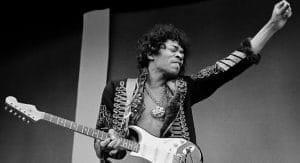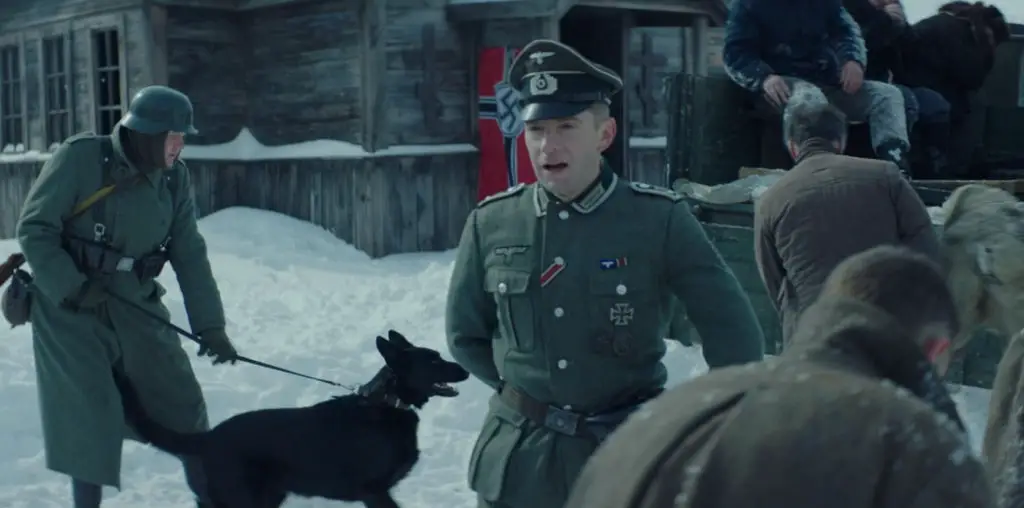
You may not know his name or what he looked like, but Jim Marshall’s photographs of rock and jazz icons of the 1950s and ’60s are instantly recognizable to those in the know about American pop culture. He shot all of the most vaunted musicians in those decades, which is not so unusual — lots of people were busy documenting some of pop music’s greatest moments. But Marshall’s pictures were among the best and most well known in a crowded field of shutter clickers.
His photos appeared on album jackets, the cover of Life magazine and other widely circulated publications of the era. He somehow managed to capture the essence of his subjects, including Miles Davis and John Coltrane, the Stones, the Who, Janis Joplin, Bob Dylan, the Beatles and hundreds of others.
He was sociable, persistent, curmudgeonly and sometimes dangerous. He liked cars, guns, and cameras — the latter never got him in trouble, but you couldn’t say the same for the other two. He got picked up more than once for brandishing weapons and shooting, at least once at a neighbor, and spent time in prison for his indiscretions. He also had a mother of a cocaine habit, although by his friends’ accounts he got it under control later in his life.
“He somehow managed to capture the essence of his subjects, including Miles and Coltrane, the Stones, the Who, Janis Joplin, the Beatles and hundreds of others.”
The child of Syrian immigrants, he was raised largely by his mother and aunts — his father abandoned the family when Marshall was quite young, and some speculate that the rage within him is the result of that trauma.
Alfred George Bailey’s documentary features archival interview footage of Marshall, who died in 2010 at 74, as well as interviews with musicians and fellow photographers who knew him well. It’s a wonderful tribute to a man who seemed to blend in with musical elite wherever he went, yet somehow remained an outsider. The film is a virtual time machine of great moments. As one commentator remarks, Marshall’s photos are probably a better representative of the live concerts he captured than any documentary film could have been. Above all else, he knew that his camera gave him access to people and places that most of us would never get close to.
He was loved by his friends, who acknowledge he was tough to take at times. Yet he managed to ingratiate himself with musicians who were at the top of their game. He was sometimes irritable and quick-tempered, but his ability to take the most perfect, thoughtful and personal portraits of musicians put him on a level with the stars he photographed. Part of the reason he was allowed such extraordinary access to the best of the lot was because they felt his art was on a par with their own.
A San Francisco native, he was an ardent follower of the Grateful Dead, Jefferson Airplane, Janis Joplin and other bands that made up the Haight Ashbury scene of the mid-to-late 1960s. He grew up in that neighborhood, so that era’s alternative rock scene developed virtually on his doorstep.
“A San Francisco native, he was an ardent follower of the Grateful Dead, Jefferson Airplane, Janis Joplin and other bands that made up the Haight Ashbury scene of the mid-to-late 1960s.”
Among his most iconic photos are the ones he took of Jimi Hendrix playing his guitar during sound check at the Monterey Pop Festival in 1967, Janis Joplin backstage at that event as well as the Who and Otis Redding.
His photo of Mick Jagger wearing a shirt with “Palace Laundry” emblazoned on it became a poster that was probably thumbtacked on dormitory walls from coast to coast. One of his most famous and historic photo shoots was that of the Beatles’ concert at Candlestick Park in San Francisco in 1966. He was allowed unparalleled access to the band, per their request, and he photographed the bandmates at what would be their last concert together. No one knew that it was to be their swan song, but the photos betray a weariness in the four that was obviously not visible to the spectators. The concert was not a success, Marshall says in archival footage. They had no other amplification except their own amplifiers, and only stadium lighting was used. They were tired and eager to get it over with.
Anecdotes about the musicians that Marshall rubbed shoulders with are an infectious element of the film. There was the time when Miles Davis tried to brush him off until he looked at the photos he took of Coltrane that Marshall insisted he see. Then Miles wanted to know why he wasn’t taking pictures of him like that. “Why don’t you let me take them?” Marshall retorted.
Dozen of other such moments make Show Me the Picture a must see for music fans and anyone else who wants to bask in the glow of a terrific photographer and an unforgettable era for pop music.
Show Me the Picture: The Story of Jim Marshall (2019) Directed by Alfred George Bailey. Starring Jim Marshall, Amelia Davis, Galadrielle Allman, John Carter Cash, Peter Frampton, Jorma Kaukonen, Michelle Margetts, Graham Nash, Katherine Poppy, Jon Savage Jim Stern, Ken Valente, Adam Block, Anton Corbun, Michael Douglas, Eileen Hirst, Kemau Kenyatta, Nion McEvoy, Joanne Parrilli, Jeff Rosenheim, Joel Selvin, Bruce Talamon, Michael Zagaris. Show Me the Picture: The Story of Jim Marshall screened at the 2019 SXSW Film Festival and the 2019 San Francisco International Film Festival.
9 out of 10 Rolls of Kodachrome


Proud of you Alfred. Can’t wait to see it.